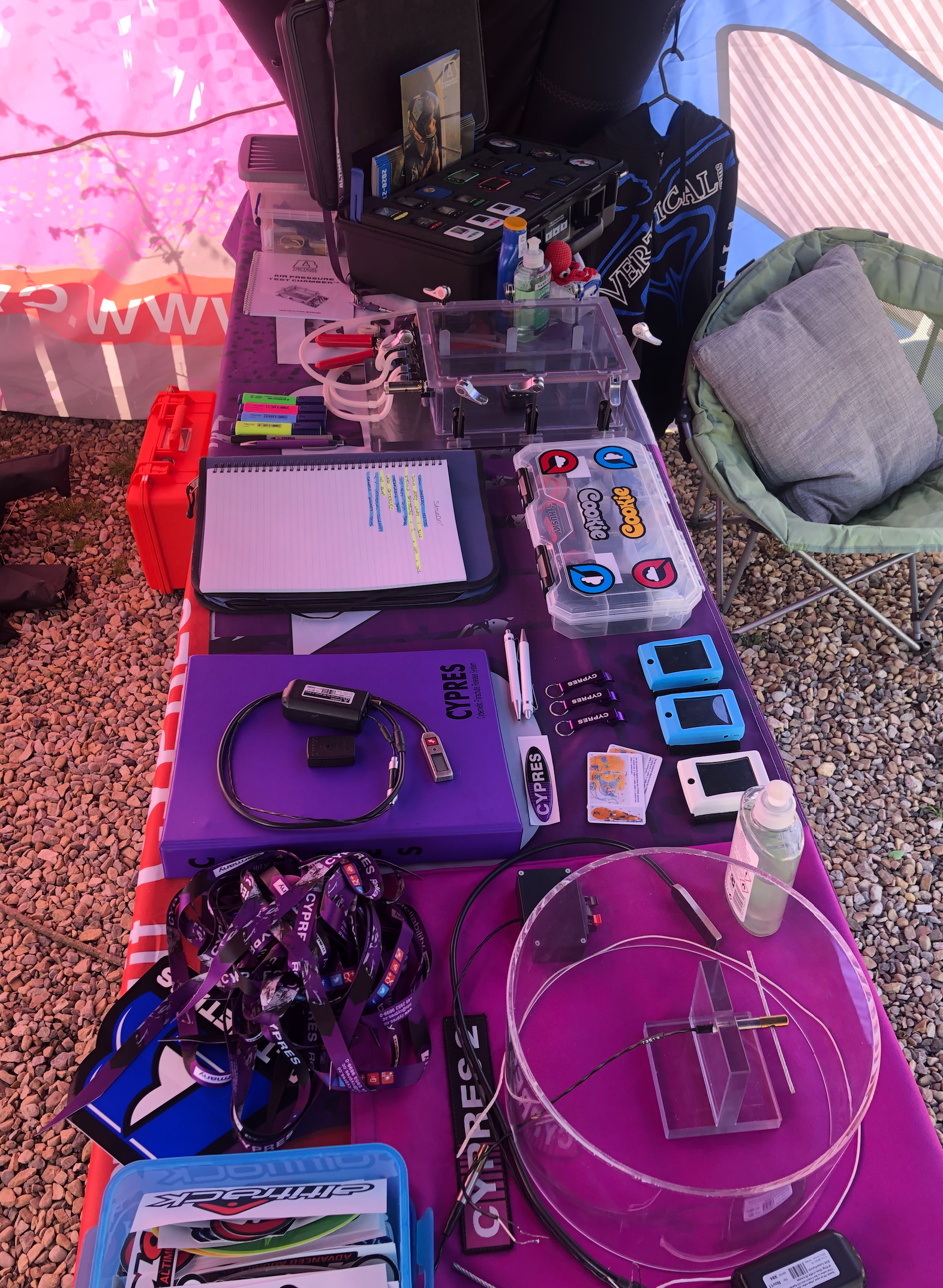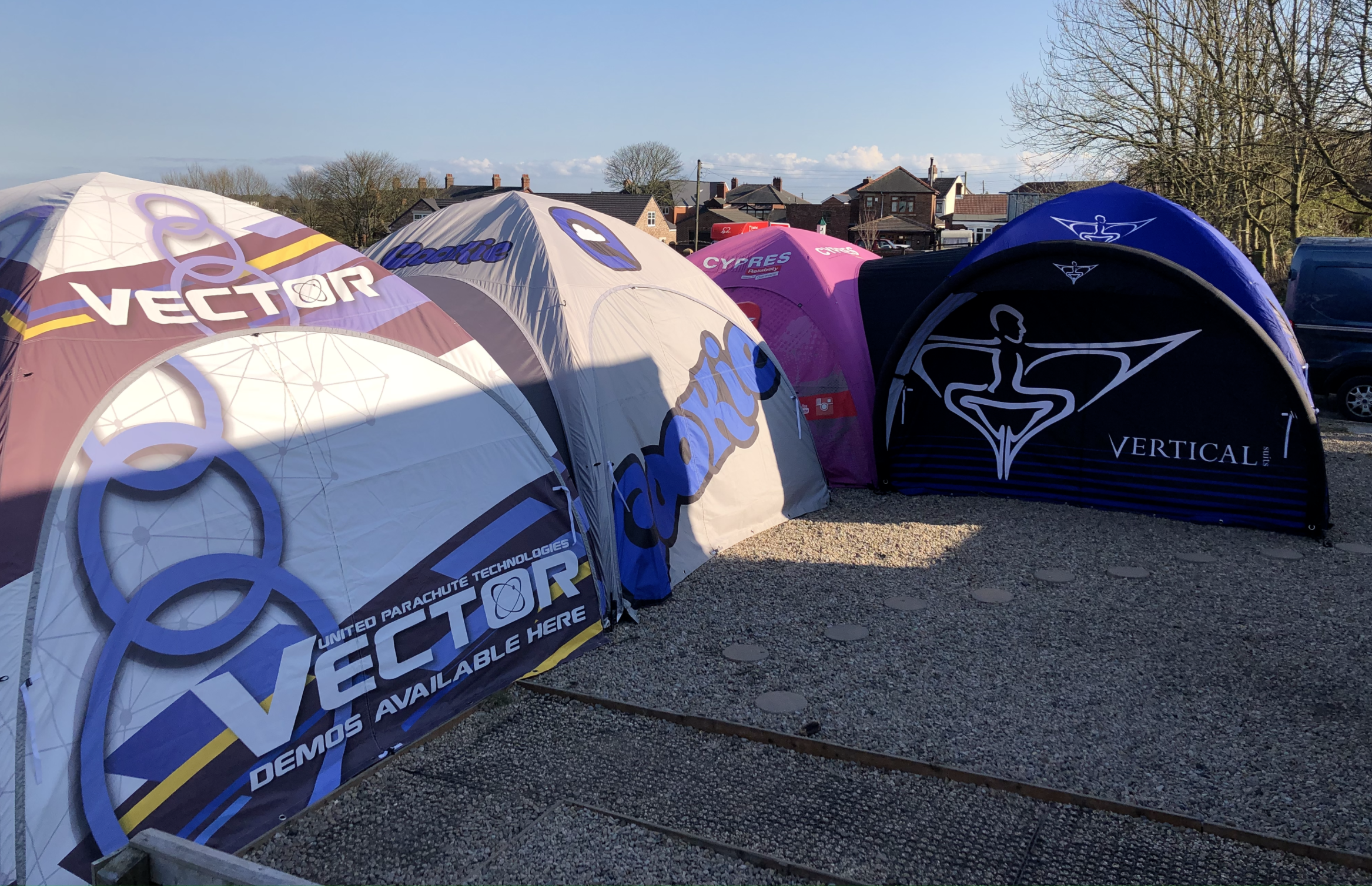
- Home
- Aad Technology
- Education and training
- Road Show
- CYPRES x Vertical Roadshow 2021: What About When The Weather Sucks?
CYPRES x Vertical Roadshow 2021: What About When The Weather Sucks?
Tuesday, January 4, 2022
Dropzones can be found wanting for things to do when the weather is bad. The good version is that this is when we reinforce the friendships made in the air and learn through storytelling the ins and outs of our sport. The bad version is that a stopped dropzone becomes a valueless time sink – at the end of which you are left feeling you have achieved nothing with your day and could have done so much better.
There is a lot that we can and should learn about how our gear works, and the CYPRES unit is part of this. There are five main topics I demonstrate and discuss how your CYPRES unit works, which can be slotted in and around a jumping day, or smooshed together into a more substantial seminar type thing. Here is a very brief bit about this stuff that will possibly entice you towards either attending when you can or diving into the available material by yourself…

Speed Setting – This is for hardcore swoopers right? No. Based on the increasing rapidity of progression, these days the speed setting is for a much greater percentage of skydivers. You can fairly easily exceed 78mph and fire an Expert CYPRES with a 270-degree turn on a modern high-performance canopy such as a Leia or Valkyrie. There are even videos you can seek out that demonstrate this with more surprising parachutes – such as a Velo 90 or even a Crossfire. The answer is that the sooner you engage with the information and become aware of the speeds you are achieving on landing, the better it is. There are various gizmos that you can use for this.
Offset – 20 minutes before the innhopp the CYPRES guy suddenly becomes the most important person in the world. It is an easy thing to do, but people always want to be assured by an authority figure that their setting is correct. The best way to learn a thing that involves pressing buttons is to press the buttons yourself, so gather around everybody – fingers and rigs at the ready.
Activation Altitude – The shortest version of this debate is that as you get fancier and fancier, the parameters within which you operate get narrower – and the trade of one risk versus another grows more serious. For almost everyone, the default activation is what you need, but there are scenarios in which upping your activation altitude a bit is the right choice. What you need to do is ask the right questions. Do you know what the right questions are?
Cutter Demonstration – The reliability of the CYPRES unit has created a kind of mental contradiction. It is such a consistent device that its existence as part of your gear is normalised. While student usage is a little different and happens for more ‘minor’ things – an activation while sport jumping is a dramatic event. The cutter demo represents this quite well. One cuts the cable with the press of a button and a little pop – but at the same time, it is important to remind people of the significance of what this can mean. I like to use a few examples from interviews I have done over the years (available on this very website) – the guy flat spinning for a couple of minutes in a wingsuit until his face goes like a beetroot, the people still obliviously carving head-down at 750 ft, the lady saved by her unit after completing thousands of jumps without one.
Wingsuit CYPRES – Freefall fast, canopy slow – right? Not anymore. Big modern wingsuits combined with relatively small parachutes mean that the performance envelopes much more frequently overlap and even switch altogether. This is why there needs to be a wingsuit unit that lets you know with beeps that you can properly engage with flying your parachute after deployment.

The next step is to form up these topics and structure them as lesson units, supported by relevant materials and deliverable out in the world as modular elements for educators to incorporate into their teachings. This way, you don’t necessarily have to track down the tent guy or read lots of things to get the information you need – it will be available in various formats and places from actual humans who can go back and forth with you on each subject.
Also, you know – something to do when the weather is bad.
By Joel Strickland
Tags: CYPRES, CYPRES Road Show, education, Joel Strickland
Adventure, Tips, and Adrenaline
Subscribe to Our Newsletter
By signing up for our newsletter you declare to agree with our privacy policy.

